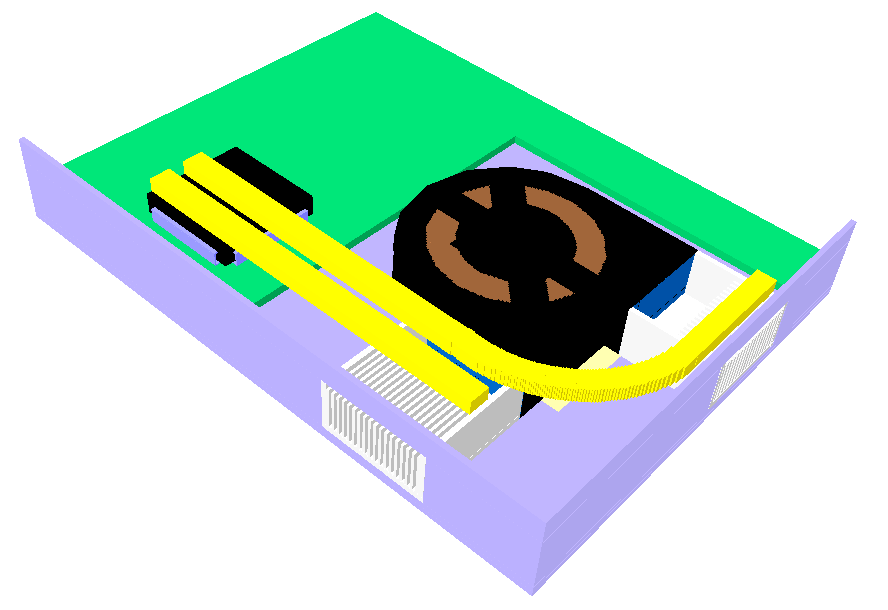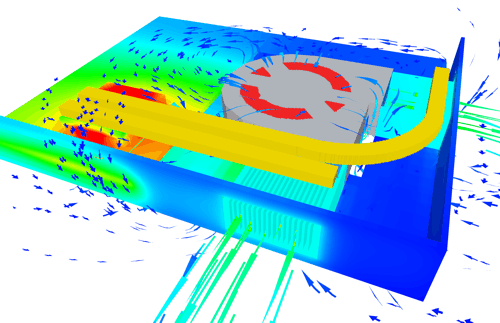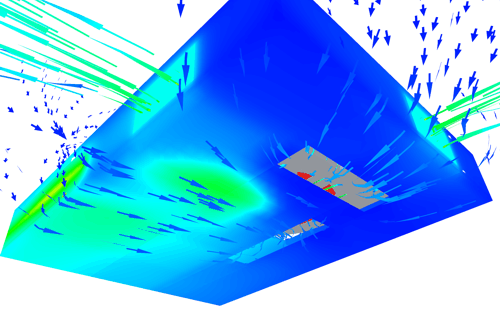Dell Precision – Spot on Thermal Design
Develop 3D is a UK based Magazine and Website focussing on the technologies involved in product design. The latest copy had a fascinating article on Dell’s Precision Workstation labs. This blog is being written on a Precision M4500 which I’ve lugged around countless airports and dumped, wearily, on numerous hotel beds. The fact that it works as well now as when I first got it a few years ago is testament to Dell’s design processes and technologies.
The article, http://www.develop3d.com/features/a-peek-inside-dells-workstation-labs , looks into Signal Integrity and Thermal design. Both are key aspects in achieving competitive product performance. From a thermal perspective the overall power dissipation is related to the frequency at which the PC will operate (well, the dynamic portion of the power dissipation is). Increased power leads to increased temperatures. If the temperatures get too high things start to break, the supplier gets a bad reputation, warranty costs spiral, other very bad things ensue. This catastrophe can be diverted by throttling down the power before the temperatures get too high. Downside is that performance is limited. Having a cooling architecture that is sufficiently effective at removing the heat quickly can therefore have a marked and direct effect on the competitive nature of the product (read $$).
As the article quotes, “[We do] simulation way early on, looking at how thermals are going to work, almost in turn figuring out how the whole box is going plug in together and work together before we even build the first one.” An excellent example of doing design at the right time. A mature design process is one where simulation is used at a conceptual, pre ‘concept commit’ stage to determine at a high level what the major design constraints will be. Interesting that at this stage in the design, before the green light has been given and lots and lots of engineers and detailed engineering tools are deployed, there is very little detailed design data. From a simulation perspective this is actually quite liberating. Good engineering judgement can be applied to drive the simulation tool, in the context of little or no IDF or STEP, to answer questions such as “how many vents will we need?”, “one micro blower or two?”, “heatpipes?” etc.
 FloTHERM was adopted early on for telecomms, networking and computing applications and is especially well suited to conceptual design. It’s simple CAD type interface, building block approach to 3D model construction, instant grid calculation and fast+robust CFD solution technology really comes into their own. Here’s some output from an application example we install with FloTHERM. A corner section of a generic laptop with a double inlet/outlet blower, convection cooling a couple of ducted heatsinks that are supplied the heat via a couple of heatpipes connected to a PLCC package.
FloTHERM was adopted early on for telecomms, networking and computing applications and is especially well suited to conceptual design. It’s simple CAD type interface, building block approach to 3D model construction, instant grid calculation and fast+robust CFD solution technology really comes into their own. Here’s some output from an application example we install with FloTHERM. A corner section of a generic laptop with a double inlet/outlet blower, convection cooling a couple of ducted heatsinks that are supplied the heat via a couple of heatpipes connected to a PLCC package.
The animated air flow behaviour enables appreciation of how the design is working, is all the cold air ingested that could be? Is any hot air recirculated back inside?
If you’d like to find out more about FloTHERM this introduction to FloTHERM webinar gives a good overall impression as to what it can do, worth checking out.
One final thought, if you are ‘lucky’ enough to have highly detailed EDA and MCAD design data to hand when using FloTHERM maybe you should ask yourself if it’s a bit late in the day simulating the design for the first time.
8th August 2014, Ross-on-Wye

